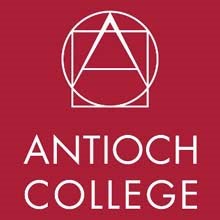Recently the Blog visited the Yellow Springs offices of Antioch University to interview Chancellor Toni Murdock and Board of Governors Chair Art Zucker, who is in town to meet with new Antioch McGregor President Michael Fishbein. Now that the search for a President for McGregor has been concluded, the two major items left on the University’s agenda are the negotiations with the Antioch College Continuation Corporation (AC3) for the purchase of Antioch College and the creation of independent boards for the five colleges that make up the university.
Negotiations with the alumni for purchase of the college
As the June 30 deadline for the University and AC3 boards to enter into an agreement to purchase the college approaches, Murdock and Zucker are confident that it will be met, they said. The current deadline is an extension of the original 90-day deadline that passed at the end of April.
“We have a board meeting the first week in June,” Zucker said. “We have been at this for two years. We need to go on with life. We are going to meet the deadline.”
According to Murdock, there were three plans considered for the reopening of Antioch College. After consulting with experts, she concluded that the “only way it can be pulled off is if the alumni drive it.”
“At our June, 2008 meeting we came to the decision that this is the only way we can succeed,” she said.
The agreed upon price for the campus is six million dollars - five million of that in cash at the closing. According to Director of Public Relations Lynda Sirk, who was also present at the interview, the price the board is charging the alumni for the college is not the market price. It is the minimum amount in cash the University Board needs to meet its financial obligations.
“We are concerned about them succeeding,” Murdock said. “There is a legacy. There is potential for confusion between the names. A failure of the new Antioch College would hurt the image of the University.”
AC3 has said it plans to raise $15 million, but recently acknowledged that they are still short of that goal. The University has not yet seen a business plan from the alums, but Zucker said they expect to have it in hand in time for their next board meeting.
As for having had to extend the deadline once before and what it will take to meet the June 30 deadline, Murdock said, “The first deadline was an estimate. There was a provision in the letter of intent to extend it if necessary.” As for the second deadline, “An agreement can be reached before the rest of the details are worked out.”
Those details are numerous, including, but not limited to: the AC3 board obtaining 501 (c) (3) nonprofit status; separating the college’s endowment from University funds; the condition of the buildings; and the status of pending litigation. The college’s endowment is estimated by Zucker at between $15 million and $20 million and is being identified by checking the restrictions on every gift ever made to Antioch, he said. The final amount is subject to approval by the Ohio Attorney General and the Probate Court.
“As long as there is litigation, there can’t be a transfer of assets,” Murdock said.
Is it possible there will be an additional extension of the deadline? According to Zucker, it is not likely and will only happen if dictated by external factors. But he remains confident.
“The agreement can be signed with conditions,” he said.
Explaining the decision to close Antioch College
“The College was bleeding,” Zucker said. “It was putting the whole University at risk. Without the June, 2007 decision, the University would not exist today. The declaration of financial exigency had to be made when it was made.”
According to Murdock, the College’s capital campaign in 2004 was aimed at raising $100 million, then lowered to $65 million, which they did not meet.
“An ingredient in the thought process was ‘do the alums have the capacity?’’’ Murdoch said. “The answer was either no, or they were not invested. The attitude of the alumni was the college always manages to get out of trouble.”
Murdoch was faced with the question of how to run a college with a low endowment and collecting only 50% of the tuition. The college was taking $5 million-a-year out of the endowment’s principal. The annual fund was always less than $1 million.
“I live for Antioch College. It is the basis for all my life’s successes,” Zucker said. “I am passionate about it. My story is not uncommon.”
Yet, with all the successful Antioch alums, in June, 2005, they could only identify two major donors. And that had historically been the problem.
“Leon Botstein, President of Bard College, said, Antioch College failed because its alumni have abandoned it,” Zucker said.
So, why is this alumni effort different?
“I have the greatest confidence in [AC3 Board Pro Tempore Chair] Lee Morgan and [AC3 Chief Transition Officer] Matthew Derr,” Zucker said. “They are the best choice to represent the alumni. If they can’t raise the money, nobody can.”
Independent boards for the five Antioch University campuses
According to Murdock, the separate board approach was initiated three years ago, independent of what was going on with Antioch College. In fact, at that time, it was anticipated the Antioch College would have a board, she said.
The University went on to amend its bylaws to require each campus to select a board of 15 trustees. They are each required to have an interim board of 11 trustees in place by September. Under what Murdock calls a “federated model” the campuses keep money they generate and pay overhead to the University.
Locally, Antioch University McGregor has selected Phil Parker, President of the Dayton Chamber of Commerce, as its Board Chair. He is working with incoming McGregor President Michael Fishbein, to fill out the interim board, which is currently at five committed. According to Murdock, she has been recommending local people for consideration and Fishbein has been talking to them.
“This encourages entrepreneurship,” she said. “There is no other private nonprofit institution of higher education like this.”
She describes the delegation of powers, which will include approval of their own academic priorities; selection of their own president (with the Chancellor’s input); raising, managing and keeping their own money; managing their own campus budget; and oversight of their own campus.
“It is as an experiment,” she said. “We are telling them, ‘We are placing the campus in your hands.’”
According to Zucker, the University is coming through the current financial crisis in good shape. With a small endowment, came only small losses, he said.
“We have the ability to meet our budget,” Zucker said.
Murdock is likewise optimistic, feeling the University is in a position to meet the needs of demographic changes in a student population where people are working longer and there are more students over the age of 25. The University, which is geared to training professionals, is attractive to career changers, those looking to step up from an academic undergraduate degree.
“We are well-positioned, because we are small enough to change,” she said. “We are flexible enough to build programs that are in demand.”
As a for-instance, she talks about some of the campuses adding programs on the environment and, given the local resources available to it, identifies McGregor as a likely candidate for a program on the environment and alternative energy.
“The Chancellor and Board of Governors sets the direction for the University,” Murdock said. “My style is to talk about it with the Presidents, before we say this is the University’s direction. I get their buy-in first.”
Subscribe to:
Post Comments (Atom)








2 comments:
Chancellor Murdock has little regard for the truth.
Point 1) "According to Murdock, the College's capital campaign in 2004 was aimed at raising $100 million,then lowered to $65 million, which they did not meet." In fact, the College's campaign was announced in the Summer of 2001, was initially set at $65 million. Then, during the imposition of the "Renewal Plan" the powers that be decided that $100 million was needed to flesh out the bells and whistles on the labor-intensive curriculum that a Board-selected commission imposed on the College. When it became clear that the Renewal Plan was not going to generate the sort of buzz that was expected, and when the first entering class was shaping up to be only 65 students, they backed away from the 100 million goal, alumni donors became rightfully skeptical, and so they began raiding the endowment instead.
Point 2) "Murdock was faced with the question of how to run a college with a low endowment and collecting only 50% of the tuition. The college was taking $5 million-a-year out of the endowment's principal. The annual fund was always less than $1 million." In fact, the Board was taking $5 million-a-year out of the endowment to fund what was supposed to be their approved plan to "renew" the College, and after exhausting the $10 million gift which was converted from endowment to operating, and finding that the new plan (a) had attracted very few students, (b) had retained only 50% of those students, and (c) had attracted only minimal alumni support, they pulled the plug and declared financial exigency. In fact, prior to the imposition of the "Renewal Plan", giving to the College's endowment had been between $1.4 and $1.6 million annually, with several million in other giving by major donors. The fact is that the Renewal Plan resulted in a loss of 50% of the College's enrollment, and similar losses in alumni support for the College.
Point 3) "Yet, with all the successful Antioch alums, in June 2005, they could only identify two major donors. And that had historically been the problem." By June of 2005, the Board and the University had alienated most of the major donors of the College. Historically this had NOT been the College's problem. Up until 2001 the College had carefully cultivated major donors, and built an annual fund to sustain the comprehensive campaign that was launched in 2001. The feasibility study conducted by Ketchum, Inc. bears this out, reflecting interviews with more than 100 major donors of the College.
Point 4) "'As long as there is litigation, there can't be a transfer of assets,' Murdock said." In fact, all of those involved in the faculty lawsuit clearly understand that the transfer of assets to an independent and autonomous Antioch College renders the the faculty litigation moot. To once again suggest that the failure of negotiations may be blamed on the faculty is unconscionable.
Chancellor Murdock and the University have yet to prove, on the basis of concrete evidence presented in a court of law, (a) that the declaration of financial exigency was necessary, and (b) that there were NOT alternative means of addressing the financial difficulties, short of closing the College.
Has any member of the faculty, staff or administration of the former Antioch College ever publicly accepted any responsibility at all for the decline and demise of the college? If anyone knows of such a statement, could you please supply a quote or a link?
Post a Comment